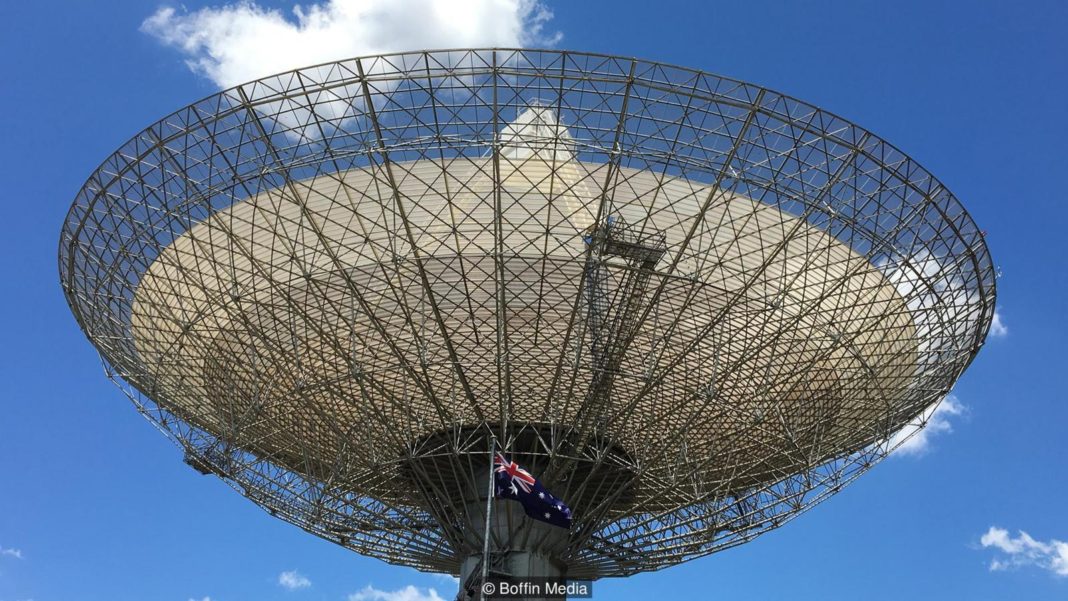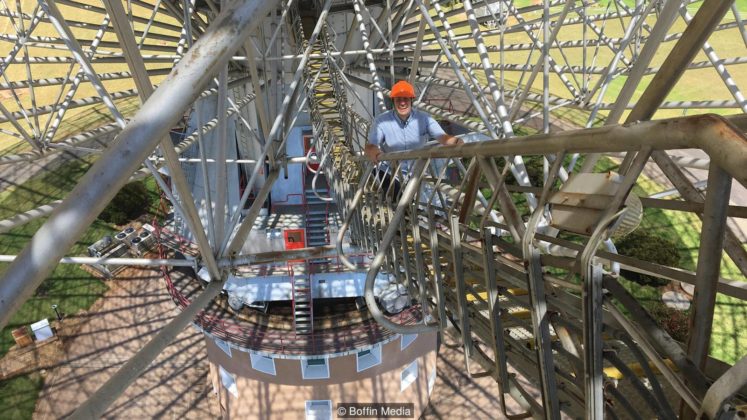Situated in New South Wales, Australia sits one of the most important and elegant scientific instruments in the world – the Parkes radio telescope. This observatory has been in operation since 1961 and has given those in the field valuable insight into the real depths of our universe. At 64 meters wide, this telescope has the ability to capture pulsars, map out galaxies, track deep space missions, and reveal black holes. But it’s probably most famous for being the eyes and ears of Neil Armstrong and Buzz Aldrin in the 1969 Moon mission.
Although most of the original parts that make up the Parkes radio telescope are in working order, the 1960’s control panel used to steer the machine has since been replaced by the likes of a computer. Within the structure, there is a flight of stairs and two small, narrow ladders that lead you up to an open gangway where you’re directly underneath the dish. Another narrow walkway will lead you towards the outer rim of the dish.
Just before the 1969 moonwalk began there were struck by terribly high winds which caused the dish to move position and slam against its opinions. Neil Fox was at the controls at the time, and he remembers how much the dish shook when the winds hit. The alarms were going off, and everyone was beginning to panic. But, they persevered, and the moment Buzz Aldrin turned on the TV camera, the Moon came into view. It was a serene and tranquil picture they were seeing while experiencing a terrible storm their end.
Houston was switching between three telescopes that were receiving the TV pictures and broadcast from the Moon. But, it turned out that Parkes’ signal was so strong that they stayed there in the end and sat back as 600 million viewers looked on with awe. Even though this monumental event took place at Parkes way back in 1969, many people still think the whole landing was a complete hoax and made up by Hollywood. But, the telescope is still used today, and with an upgrade due soon to host a whole new series of observations, this is one piece of technology that’s here to stay.
More News To Read













